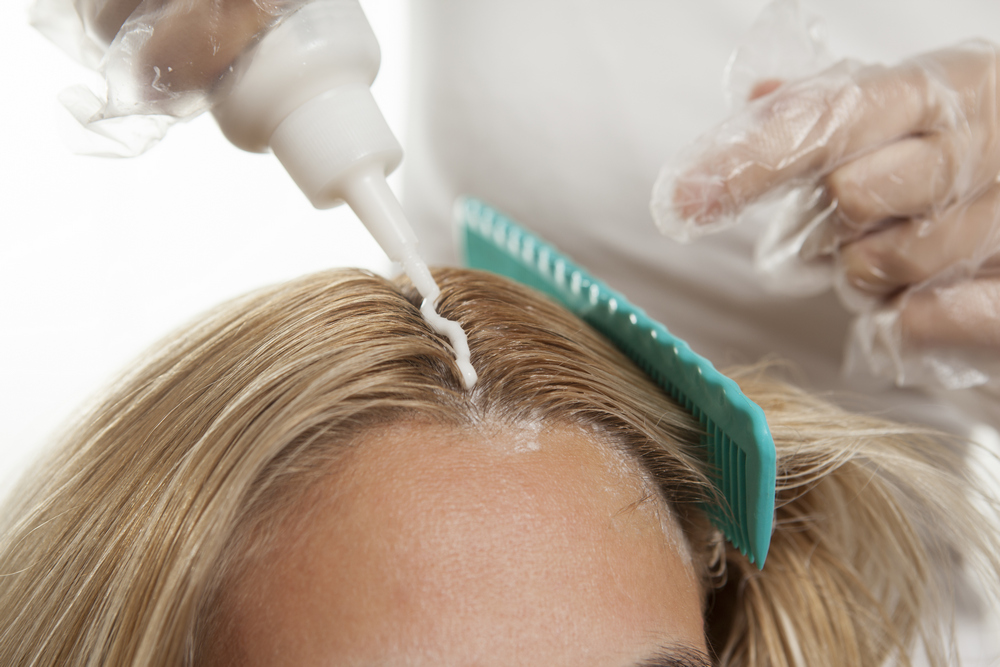Hair transplants have improved tremendously in recent years. The techniques used today are more convenient, less painful, and produce much better results than those of yesteryear, which is why so many men—and women—are opting for transplants. But it’s good to remember that a hair transplant is still technically a surgery, and like any other operation, there are some post-op guidelines that need to be followed in order to attain a healthy outcome.
Tabla de Contenidos
What Happens in a Transplant
When healthy, growing hair is grafted, the follicles are basically removed from one spot and implanted into another. This means that the recipient area has experienced a series of tiny incisions that are delicate and susceptible to damage and infection. Any substance that could potentially contaminate or irritate the affected area is to be avoided, as it will hinder the surgery’s progress or even introduce new problems. Applying hair dye—or virtually any other commercial hair product—to a sensitive, recovering scalp is a definite no-no.
The Danger of Dyes, Sprays, and Gels
It’s always tempting to “treat” our hair with things that make it look better, such as a mousse to enhance its body and give it a good luster. Most of what we add to our hair, however, is chemical in nature and often very harsh. Any dye strong enough to change hair color is abrasive to a tender scalp and to the transplanted follicles that are trying to take root and grow. It may actually burn the affected areas, causing pain and scalp irritation, as well as damaging the growth potential of the transplanted hair. It’s just not a good idea.
What Can I Put on My Head, Then?
For the first new days after a transplant: nothing.
As the healing process begins, it’s normal to see tiny scabs where the skin has been penetrated by the small pens that are used to insert the graphs. While it’s important not to pick at these graphs, your doctor may recommend some occasional spritzing with a sterile solution to keep the area from drying out. This will also help prevent any post-op infection from developing. After a little more time has passed, it’ll be okay for some gentle shampooing with a mild product that’s void of any hard chemicals or fragrances.
Eventually, once the scabbing has healed, you’ll be able to do some light brushing or combing. But dyeing or moussing may still be a few weeks away.
It’s Not Just Dyeing
For the next few days following your surgery, your surgeon may ask you to take some other precautions, such as avoiding rigorous exercise, staying out of direct sunlight, keeping your scalp from becoming too dry, or avoiding tobacco and alcohol products. You may also be encouraged to elevate your head while sleeping, and to eat a healthy diet containing hair-friendly vitamins and minerals such as a zinc or biotin. It’s particularly important to keep your head clean to avoid the risk of infection.
Long-Term Care
Remember that hair grows slowly and it has a natural resting phase, especially after the mild shock of a transplant. This is called telogen effluvium and it’s a temporary condition in which the transplanted hair may fall out. But it will grow back over a period of weeks as your scalp heals from surgery. It’s at this stage that regular styling can be resumed, and the new growth can be slowly introduced to dyes or other cosmetic treatments.
Dyeing Before A Transplant
Just in case you’re wondering—it’s not okay to dye your hair right before a transplant.
Here’s why: Like the surface of any other area that’s to be surgically treated, you want a clean, visible area that will make the process easy. Since dye takes a while to fade, it’s a good idea to avoid it for at least several days before your procedure. Hair dye can still leach off from other parts of your head and invade the transplant zone, so it’s better to go au natural altogether; your scalp should be clean and free of any foreign substances to ensure a successful, precise transplant.
Getting The Best
If you’re thinking about a transplant, or just have some questions about your hair, Hairfix Restoration Clinic has the answers.
Located in Tijuana, only minutes away from Southern California, Hairfix offers a full range of hair transplant in Mexico, from mesotherapy (nutritional injections to the scalp), hair transplants, eyebrow transplants, and beard transplants. Check out the before-and-after pictures on our site to see what the transformation that we can make. Our highly qualified, professional bilingual staff is ready to help you meet your hair goals, and at a price more affordable hair transplant than you’d find in the United States. Contact us today for a free initial consultation! Ask us about beard transplant cost and mesotherapy hair price.
If you’re interested in exploring advanced options, we also specialize in stem cell treatment for hair loss in Tijuana. This cutting-edge solution can help rejuvenate hair follicles and promote natural hair growth. Visit our blog for more information on how stem cell treatments work and how they can benefit your hair restoration journey.






